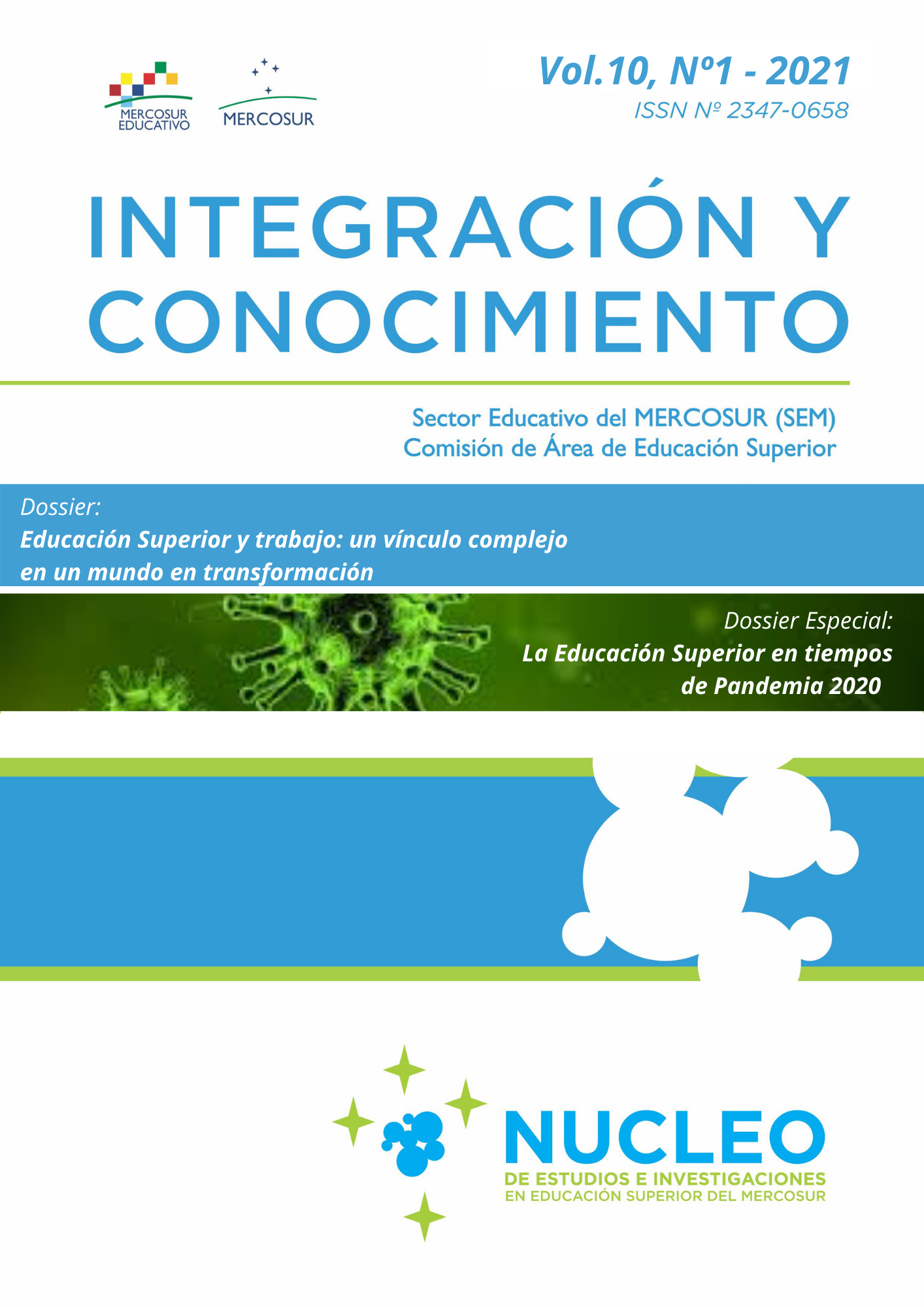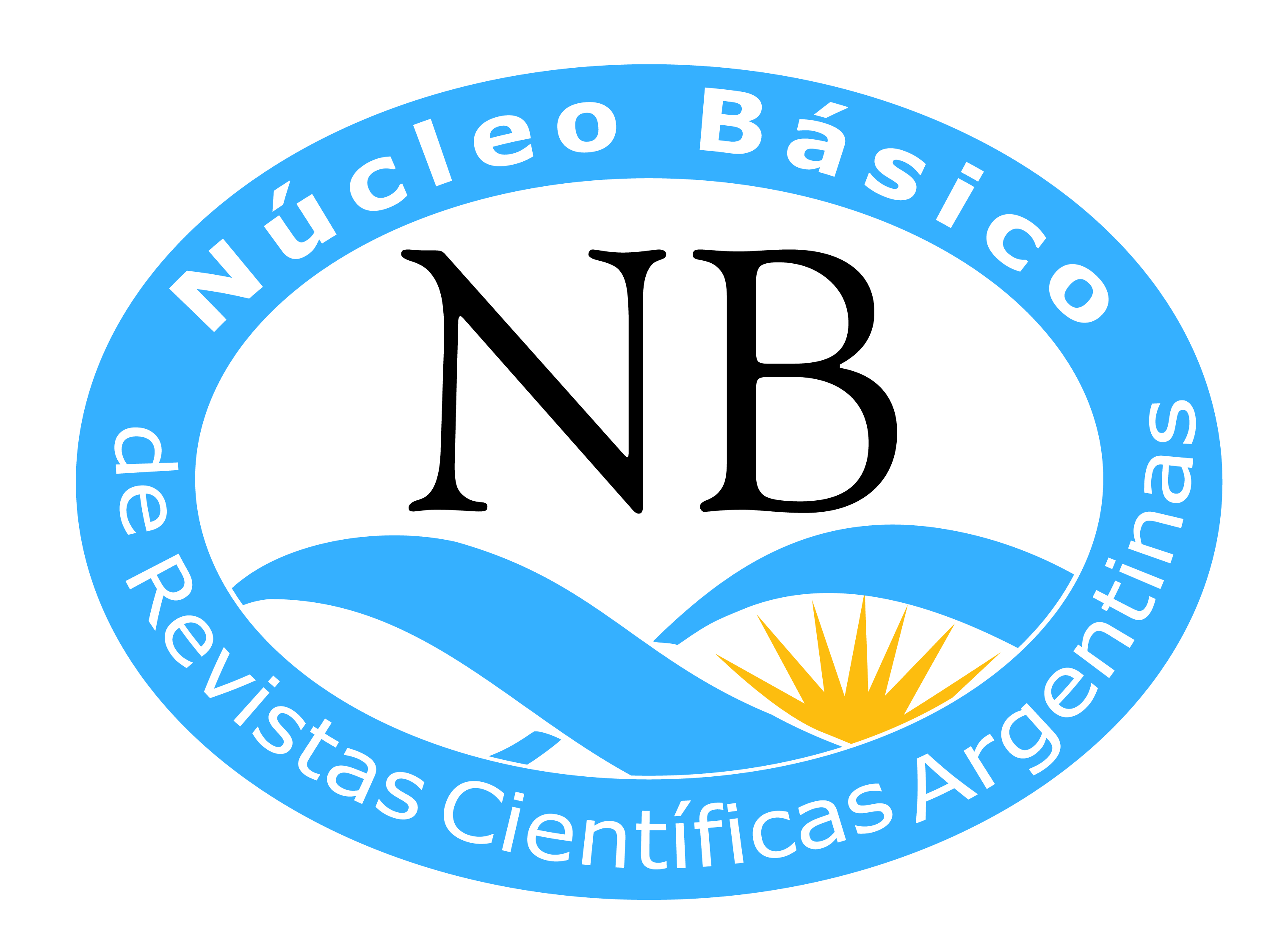CARING FOR THE RIGHT TO HIGHER EDUCATION IN TIMES OF PANDEMIC ABSTRACT
DOI:
https://doi.org/10.61203/2347-0658.v10.n1.31962Keywords:
online teaching; pandemic; inclusión; UdelarAbstract
This article aims to present a first systematization of the actions, balances and perspectives of the institutional experience of online teaching developed by the University of the Republic of Uruguay (Udelar) in the first year of the global COVID-19 pandemic. As a public macrouniversity, Udelar positioned itself in the face of the health emergency in a position of firm commitment to caring for the health of the population and the preservation of the right to education, the maintenance of student trajectories and the mitigation of the processes of educational inequality. For this, it adopted immediate measures to strengthen study conditions throughout the institution, defined general guidelines for the re-planning of teaching and evaluation, promoted didactic and technical support to teachers, as well as help and psychological containment of students. University students. It carried out follow-up actions of the educational reorganization process, both at the central and decentralized levels, in order to permanently adjust institutional action. The academic year leaves a highly positive balance in the levels of coverage of courses, with multiple experimentations, positions and evaluations of university actors. Enriched practices and impoverished practices are identified, but fundamentally, a wide range of institutional learning that forces in the near future to carry out a collective reflective balance of a deeply disturbing experience.
Downloads
References
Amaya, A., Betancor, L., Borlido, C., Bratschi, C., Cabrera, C., Collazo, M., Parentelli, V., Rodríguez, P. y Seoane, M. (2020). Enseñanza en línea. Orientaciones para la aplicación de pruebas objetivas masivas en línea. Uruguay: Udelar. Recuperado de https://www.cse.udelar.edu.uy/wp-content/uploads/2020/08/EnsenanzaEnLinea-PautasEvaluacion4.pdf
Collazo, M. (2020). Enseñanza en línea. Orientaciones básicas para el desarrollo de la enseñanza y la evaluación. Uruguay: Udelar. Recuperado de https://www.cse.udelar.edu.uy/wp-content/uploads/2020/08/EnsenanzaEnLinea-Orientaciones.pdf
Collazo, M., Cabrera, C. (2020). Enseñanza en línea. Principales resultados de la encuesta a las direcciones de carreras. Situación a mayo 2020. Uruguay: Udelar. Recuperado de https://www.cse.udelar.edu.uy/wp-content/uploads/2020/08/EnsenanzaEnLinea-Encuesta.pdf
IESALC - UNESCO. (2020). Informe COVID-19 y educación superior: de los efectos inmediatos al día después. Análisis de impactos, respuestas políticas y recomendaciones. Recuperado de http://www.iesalc.unesco.org/wp-content/uploads/2020/05/COVID-19-ES-130520.pdf
Lion, C., & Maggio, M. (2019). Desafíos de la enseñanza universitaria en los escenarios digitales contemporáneos. Aportes desde la investigación. Cuadernos de Investigación Educativa, 10 (1), 13-25. Recuperado de https://revistas.ort.edu.uy/cuadernos-de-investigacioneducativa
/article/view/2878
Maggio, M. (2012). Enriquecer la enseñanza. Los ambientes con alta disponibilidad tecnológica como oportunidad. Buenos Aires: Paidós.
Universidad de la República, Dirección General de Planeamiento Universitario. (2020). Principales resultados de la Encuesta a estudiantes de la Udelar para la evaluación de la propuesta educativa en la modalidad virtual del primer semestre 2020. Recuperado de https://udelar.edu.uy/portal/wp-content/uploads/sites/48/2020/07/Resumen_Difusi%C3%B3n_Informe_encuesta-estudiantes.pdf
Universidad de la República, Dirección General de Planeamiento Universitario. (2020). Principales resultados de la Encuesta a docentes de la Udelar sobre la propuesta educativa en la modalidad virtual del primer semestre de 2020.
Downloads
Published
Issue
Section
License

This work is licensed under a Creative Commons Attribution-NonCommercial-ShareAlike 4.0 International License.
Authors who have publications with this journal accept the following terms:
a. Authors shall retain their copyright and guarantee the journal the right of first publication of their work, which shall simultaneously be subject to the Creative Commons License of Recognition which allows third parties to share the work as long as its author is indicated and its first publication is this journal.
b. Authors may adopt other non-exclusive licensing agreements for the distribution of the published version of the work (e.g., depositing it in an institutional telematic archive or publishing it in a monographic volume) provided that the initial publication in this journal is indicated.
c. Authors are allowed and encouraged to disseminate their work via the Internet (e.g. in institutional telematic archives or on their website) after publication of the article, which may lead to interesting exchanges and increased citations of the published work. (See The Effect of Open Access).



